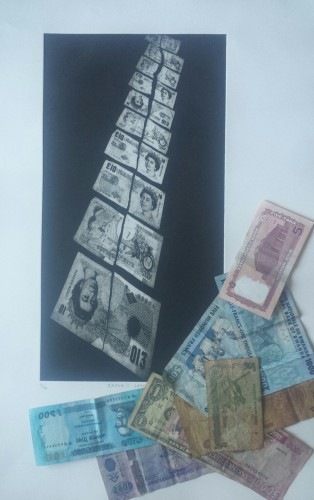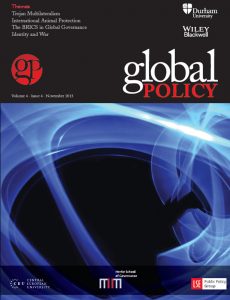“Money is Cool Now” (Part 1):
Writing for Sociology Lens earlier this year, Johannes Lenhard introduced ‘the homeless as the last materialists’ – past masters in the dying arts of cash, marginal to the ‘dematerialised’ and ‘virtual’ monetary circuits that are fast becoming conventional. For it is not only in the migraine-inducing markets for foreign-exchange derivatives (worth US$70 trillion at last count) that money appears dematerialised and virtual; you cannot any longer use cash to pay your bus fare in London. But for homeless people in Britain, Lenhard notes, coins really do matter. The feel, the storage of different denominations at varying distances from the body – and of course, the fact that in a society gone contactless, spare change is all that remains to insulate the homeless from full economic – and thus social – exclusion. But is the language of dematerialisation the best way to grasp new monetary mutants such as, say, Bitcoin, singled out by Lenhard as the quintessential virtual currency?
The idea that there is something unsettlingly insubstantial about money is not a simple product of the digital age. Ferdinand Braudel writes about early European encounters with the diabolical ability that paper money seemed to have, to reproduce itself apparently out of nothing. And Michael Taussig’s classic ethnography from the 1970s tells of ‘baptised bills’ and the ‘wages of the devil’ circulating among Colombian peasants. But following the end of dollar-gold convertibility in the early 1970s, monetary alchemy really did reach new heights. With metallism dead and buried, it came to pass that a paper banknote quite literally promised nothing more than an ‘identical replacement of itself.’ What better groundwork could be laid for an occult economy? Thus, when currency activist Matthew Slater wrote to the Bank of England’s Chief Cashier and asked what it meant that he had a £5 note in his possession printed with the words ‘I promise to pay the bearer on demand the sum of five pounds,’ he was told that this message dates from the days when banknotes were backed by gold. Since today they are backed by securities on the Bank’s balance sheet, the promise to pay is nothing more than a promise to exchange notes for identical replacements of themselves (or those of a lower denomination). This, Matthew was informed, could be done at the Bank on any day between 9am and 3pm (excluding, of course, Bank Holidays). Given their acknowledgement of the diabolical semiotics of contemporary banknotes, isn’t it rather odd that when the Bank confessed (after years of campaigning by Positive Money) that modern money is created as debt by private commercial banks, they did so using a video shot in their gold vault?
In a way, it makes perfect anthropological sense. Danny Miller has suggested, as a kind of general rule, that ‘the more humanity reaches toward the conceptualization of the immaterial, the more important the specific form of its materialization.’ In plainer terms, the more that social ideals and arrangements become abstract, digital and apparently virtual, the more we obsess about and carefully police the manner in which we objectify them. Bitcoin enthusiasts are not immune to these anxieties about materiality.* As part of a recently completed mini-project, I interviewed the director of a Bitcoin-focused start-up incubator. He was talking me through companies like TitanBTC. Titan produces ‘beautiful limited edition bitcoins’ which also contain one troy ounce of silver. They are physical, tangible and tactile coins, just like those which occupy the attentions of the homeless with whom Lenhard researches. (The bitcoin can be accessed through a code on the coin.) And this is precisely what the director of the start-up incubator found so troubling: ‘People like tangible things…at the same time I don’t like these “things,” because the new guys will think, “Oh, this [meaning the Titan coin itself] is a bitcoin!”’ Whereas the Bank of England sought to give substance to sterling after confessing that it can not only be created, but destroyed by commercial banks at the click of a button, here we have Bitcoiners reluctant to give material expression to an apparently virtual currency. To paraphrase Miller, the more Bitcoin enthusiasts reach towards the conceptualization of immaterial money, the more important the specific form of money’s materialization.
So are people who talk about the dematerialization of money missing the point? Not exactly. In my post a fortnight from today, I will take up the arguments made about Bitcoin by Nigel Dodd last week at the launch of his book, The Social Life of Money (from whence the title of this post comes). I will try and build on Dodd’s critical response to claims that ‘as a non-political online money, Bitcoin is backed exclusively by code’ (and the notion, derived from this, that Bitcoin enthusiasts are ‘digital metallists,’ as much bewitched by the materiality of code as their metallist forebears were by the materiality of gold). I will be looking at ‘next generation’ Bitcoin projects – which seek to replace what sociological granddaddy Émile Durkheim called the ‘non-contractual element in the contract’ with something akin to what Annelise Riles calls ‘private constitutions.’ It is the protocols of the Bitcoin network – rather than the materiality of its code – that should be our focus if we really want to understand the system that Nigel Dodd refers to as our existing economy ‘on acid’. And I will do my utmost to untangle that mealy mouthful on November 13th!
—
* Due to limitations on space, and since he has explained it far better than I ever could, I would point those unfamiliar with cryptocurrencies towards Brett Scott’s ‘How to explain Bitcoin to your grandmother’







1475-6781/asset/JSS.gif?v=1&s=377bb8e0c3d0fcf201f301ded7cf610142072c3e)
